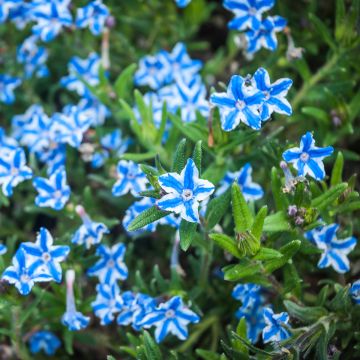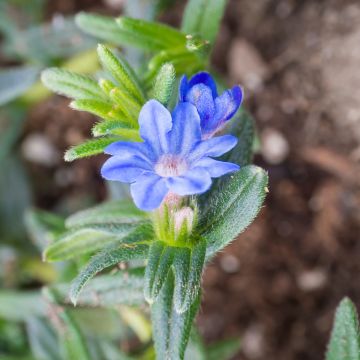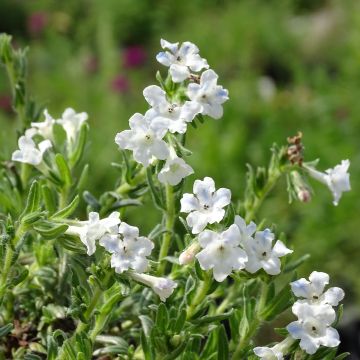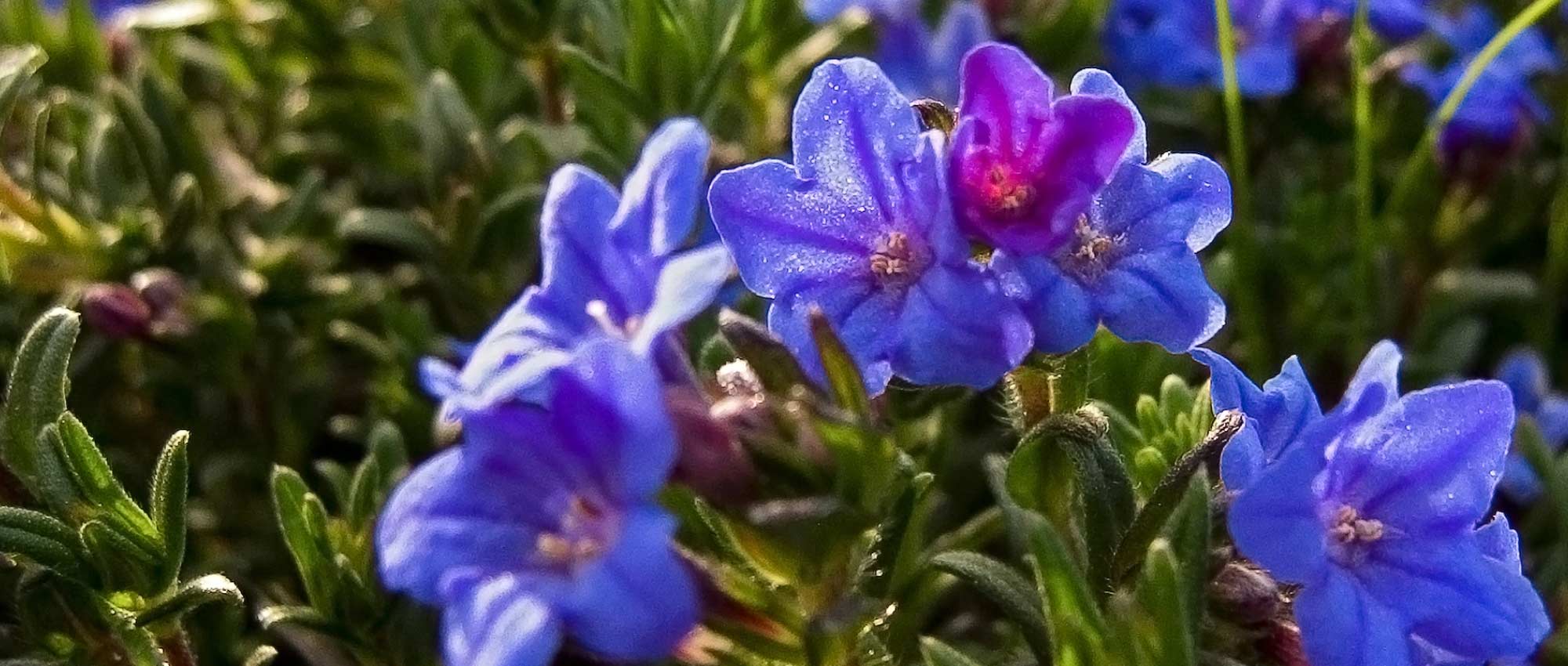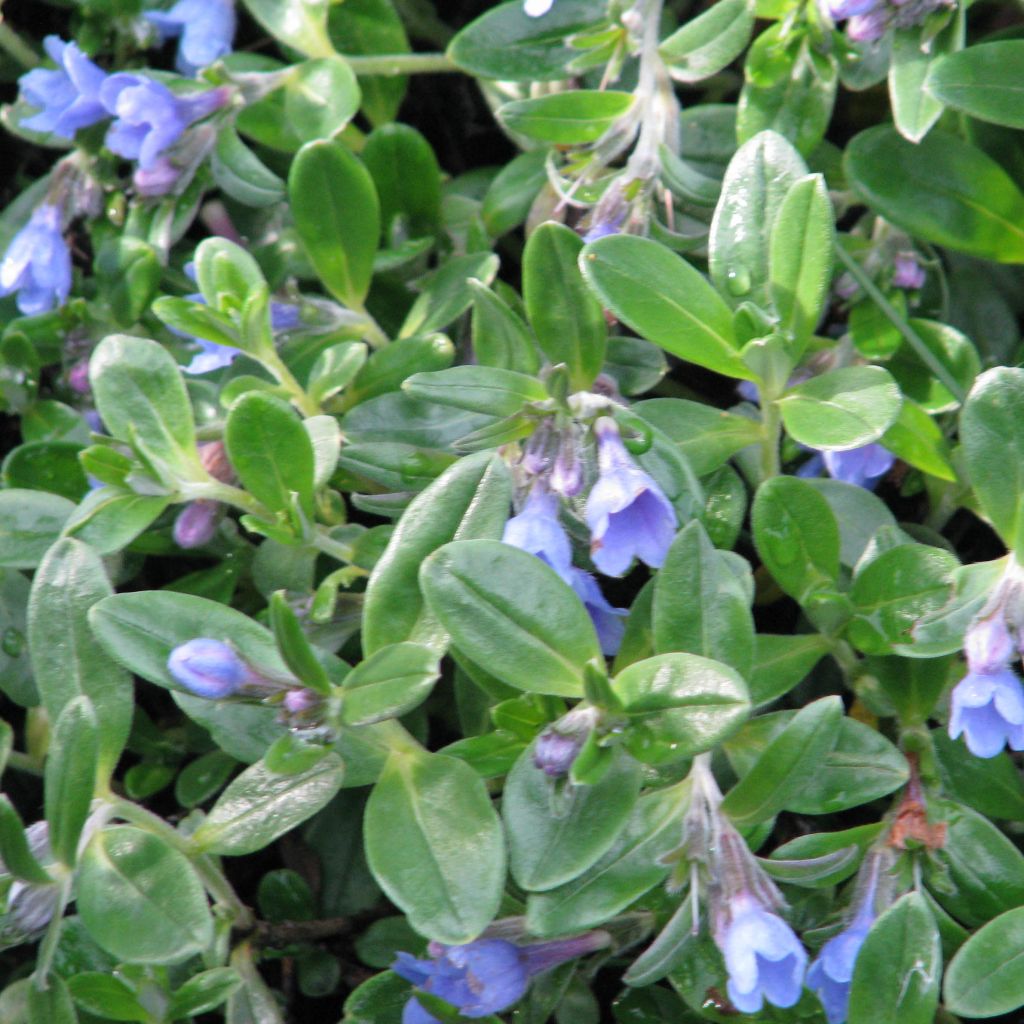

Lithodora oleifolia
Lithodora oleifolia
Lithodora oleifolia
Olive-leaved Gromwell
Special offer!
Receive a €20 voucher for any order over €90 (excluding delivery costs, credit notes, and plastic-free options)!
1- Add your favorite plants to your cart.
2- Once you have reached €90, confirm your order (you can even choose the delivery date!).
3- As soon as your order is shipped, you will receive an email containing your voucher code, valid for 3 months (90 days).
Your voucher is unique and can only be used once, for any order with a minimum value of €20, excluding delivery costs.
Can be combined with other current offers, non-divisible and non-refundable.
Why not try an alternative variety in stock?
View all →This plant carries a 24 months recovery warranty
More information
We guarantee the quality of our plants for a full growing cycle, and will replace at our expense any plant that fails to recover under normal climatic and planting conditions.
Does this plant fit my garden?
Set up your Plantfit profile →
Description
Lithodora oleifolia, also known as Olive-leaved Gromwell, is much less known than its acid-loving cousin, Lithodora diffusa, widely available in the horticultural trade. it is a rare and beautiful botanical species, well-suited to limestone and dry soils, with large pale blue-violet flowers that seem to echo the pure and vibrant sky of its native Catalonia. This prostrate undershrub also has very attractive silver foliage, actually dark green but with shiny bristles. Give it what it needs in the garden: sun, warm and rocky slopes, and no water all summer long.
The Olive-leaved Gromwell, also known as Lithospermum oleifolium, is a plant of the borage family, endemic to Catalonia and the Eastern Pyrenees. It is found particularly in Spain, in a small station near Figueras, growing in the cracks of limestone rocks. It is a slow-growing woody undershrub with a spreading habit, almost prostrate. At maturity, after 5 to 10 years of cultivation, it will reach a height of 20 to 30 cm (7.9 to 11.8 in) with a spread of 40 to 80 cm (15.7 to 31.5 in), sometimes more. The slender, highly branched stems, lying on the ground, bear persistent leaves arranged in clusters at the ends of the branches. They are ovate, pointed, dark green on the upper side, with silky and whitish undersides. Flowering takes place in spring or early summer, April-May-June depending on the climate and weather. The large, slightly violet-blue flowers, are enclosed in a woolly outer corolla and grouped in very short clusters, or even solitary. The seeds are as hard as stones, and the origin of the Latin name Lithospermum, which literally means "stone seed".
While blue flowers are always sought after, gromwell flowers are passionately sought after because they are both shiny and delicate. Lithodora oleifolia is perfect in a dry garden, a limestone rockery, or a raised bed enriched with gravel. Particularly well-adapted to a Mediterranean-type climate, it can go without watering in the summer once established. Its hardiness, from -12 to -15°C (10.4 to 5 °F) in well-drained soil, allows it to be adopted in many regions where cistus, lavender, rosemary, and similar plants thrive. For example, it can be associated with Amorpha canescens, Lupinus chamissonis (a small lupin from semi-arid areas), or nepetas in a blue garden. Some touches of colour can be added by associating it with Montpellier soapwort (pink), creeping baby's breath (white or pale pink), Teucrium cossonii (red), or the lovely orange Mimulus aurantiacus.
Lithodora oleifolia in pictures
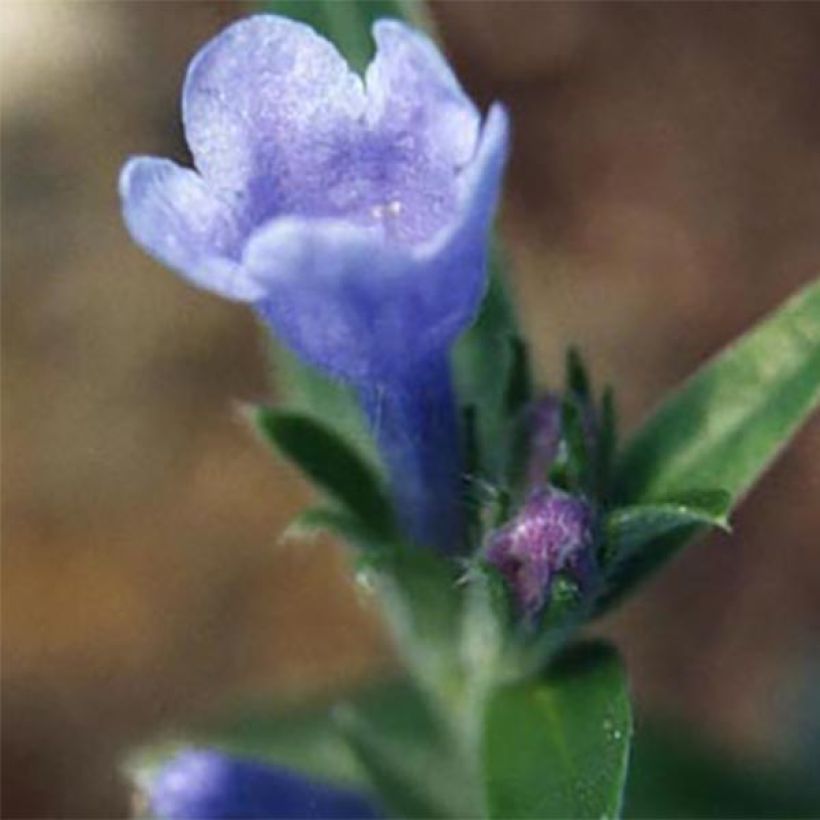

Plant habit
Flowering
Foliage
Botanical data
Lithodora
oleifolia
Boraginaceae
Olive-leaved Gromwell
Mediterranean
Other Lithodora
View all →Planting and care
The Olive-leaved Gromwell is best planted in March in cold climates, and September-October in mild climates, with milder winters. It should be grown in full sun, in a rock garden, or a crack in limestone rocks, in a mixture of garden soil and limestone gravel or any very well-draining and non-acidic substrate. This shrub has no enemies except for the combination of heat and soil moisture in summer, as well as very wet and frozen soils in winter.
Planting period
Intended location
Care
Planting & care advice
This item has not been reviewed yet - be the first to leave a review about it.
Haven't found what you were looking for?
Hardiness is the lowest winter temperature a plant can endure without suffering serious damage or even dying. However, hardiness is affected by location (a sheltered area, such as a patio), protection (winter cover) and soil type (hardiness is improved by well-drained soil).

Photo Sharing Terms & Conditions
In order to encourage gardeners to interact and share their experiences, Promesse de fleurs offers various media enabling content to be uploaded onto its Site - in particular via the ‘Photo sharing’ module.
The User agrees to refrain from:
- Posting any content that is illegal, prejudicial, insulting, racist, inciteful to hatred, revisionist, contrary to public decency, that infringes on privacy or on the privacy rights of third parties, in particular the publicity rights of persons and goods, intellectual property rights, or the right to privacy.
- Submitting content on behalf of a third party;
- Impersonate the identity of a third party and/or publish any personal information about a third party;
In general, the User undertakes to refrain from any unethical behaviour.
All Content (in particular text, comments, files, images, photos, videos, creative works, etc.), which may be subject to property or intellectual property rights, image or other private rights, shall remain the property of the User, subject to the limited rights granted by the terms of the licence granted by Promesse de fleurs as stated below. Users are at liberty to publish or not to publish such Content on the Site, notably via the ‘Photo Sharing’ facility, and accept that this Content shall be made public and freely accessible, notably on the Internet.
Users further acknowledge, undertake to have ,and guarantee that they hold all necessary rights and permissions to publish such material on the Site, in particular with regard to the legislation in force pertaining to any privacy, property, intellectual property, image, or contractual rights, or rights of any other nature. By publishing such Content on the Site, Users acknowledge accepting full liability as publishers of the Content within the meaning of the law, and grant Promesse de fleurs, free of charge, an inclusive, worldwide licence for the said Content for the entire duration of its publication, including all reproduction, representation, up/downloading, displaying, performing, transmission, and storage rights.
Users also grant permission for their name to be linked to the Content and accept that this link may not always be made available.
By engaging in posting material, Users consent to their Content becoming automatically accessible on the Internet, in particular on other sites and/or blogs and/or web pages of the Promesse de fleurs site, including in particular social pages and the Promesse de fleurs catalogue.
Users may secure the removal of entrusted content free of charge by issuing a simple request via our contact form.
The flowering period indicated on our website applies to countries and regions located in USDA zone 8 (France, the United Kingdom, Ireland, the Netherlands, etc.)
It will vary according to where you live:
- In zones 9 to 10 (Italy, Spain, Greece, etc.), flowering will occur about 2 to 4 weeks earlier.
- In zones 6 to 7 (Germany, Poland, Slovenia, and lower mountainous regions), flowering will be delayed by 2 to 3 weeks.
- In zone 5 (Central Europe, Scandinavia), blooming will be delayed by 3 to 5 weeks.
In temperate climates, pruning of spring-flowering shrubs (forsythia, spireas, etc.) should be done just after flowering.
Pruning of summer-flowering shrubs (Indian Lilac, Perovskia, etc.) can be done in winter or spring.
In cold regions as well as with frost-sensitive plants, avoid pruning too early when severe frosts may still occur.
The planting period indicated on our website applies to countries and regions located in USDA zone 8 (France, United Kingdom, Ireland, Netherlands).
It will vary according to where you live:
- In Mediterranean zones (Marseille, Madrid, Milan, etc.), autumn and winter are the best planting periods.
- In continental zones (Strasbourg, Munich, Vienna, etc.), delay planting by 2 to 3 weeks in spring and bring it forward by 2 to 4 weeks in autumn.
- In mountainous regions (the Alps, Pyrenees, Carpathians, etc.), it is best to plant in late spring (May-June) or late summer (August-September).
The harvesting period indicated on our website applies to countries and regions in USDA zone 8 (France, England, Ireland, the Netherlands).
In colder areas (Scandinavia, Poland, Austria...) fruit and vegetable harvests are likely to be delayed by 3-4 weeks.
In warmer areas (Italy, Spain, Greece, etc.), harvesting will probably take place earlier, depending on weather conditions.
The sowing periods indicated on our website apply to countries and regions within USDA Zone 8 (France, UK, Ireland, Netherlands).
In colder areas (Scandinavia, Poland, Austria...), delay any outdoor sowing by 3-4 weeks, or sow under glass.
In warmer climes (Italy, Spain, Greece, etc.), bring outdoor sowing forward by a few weeks.































